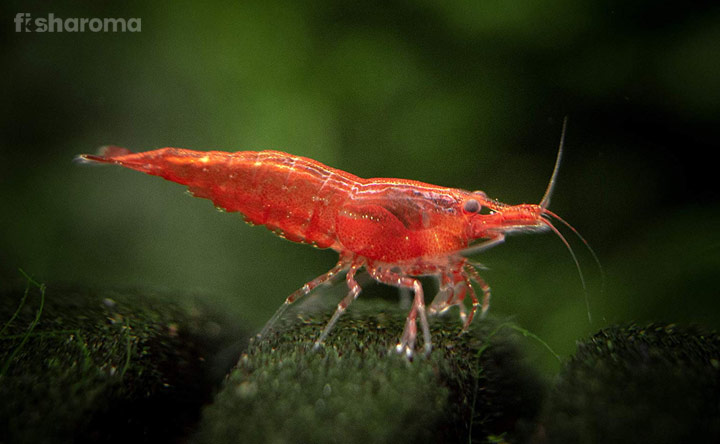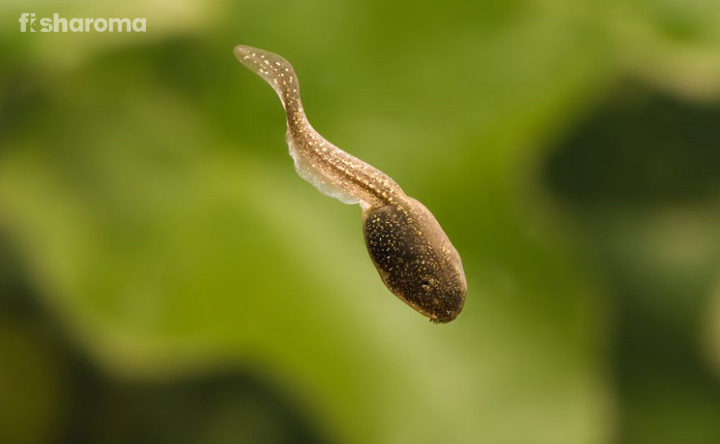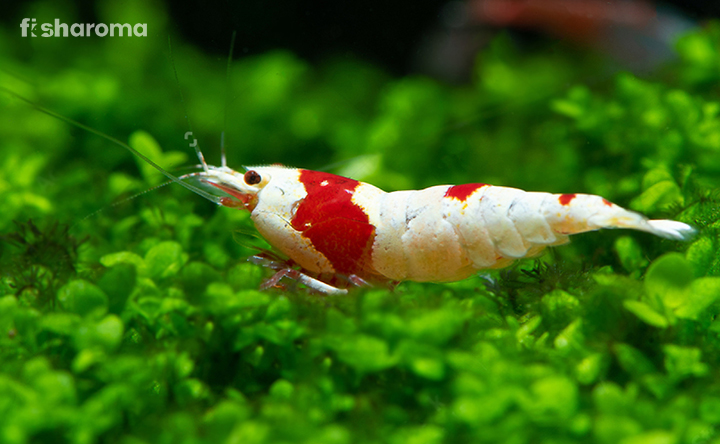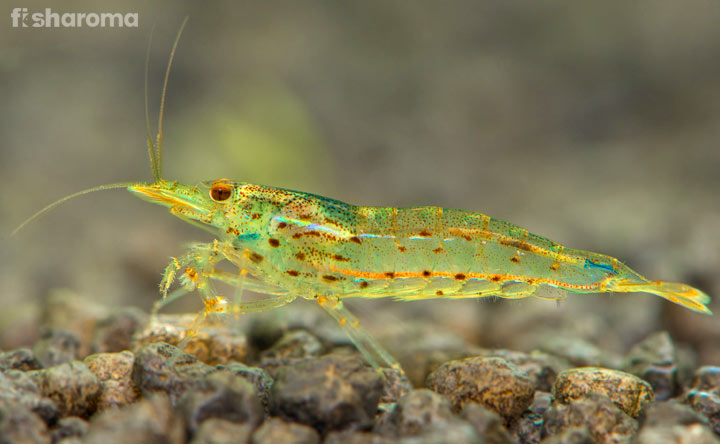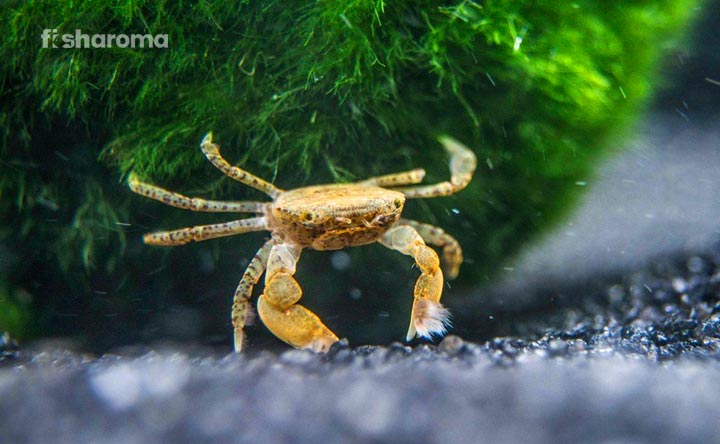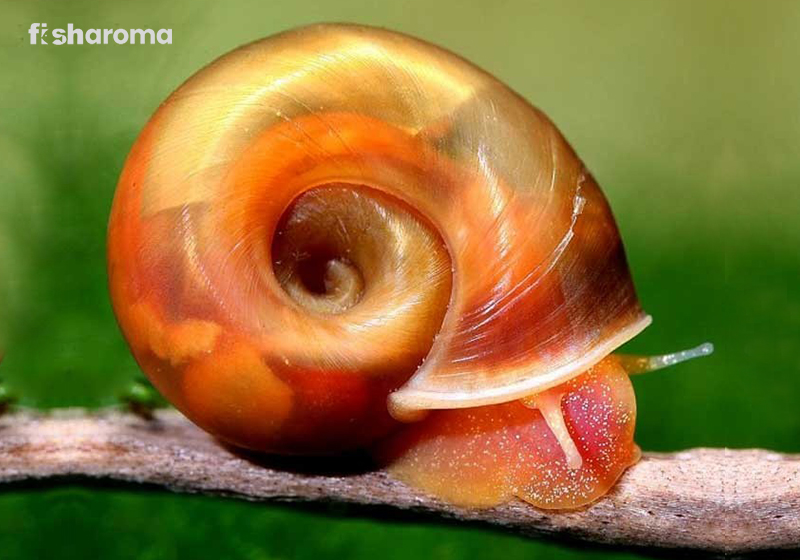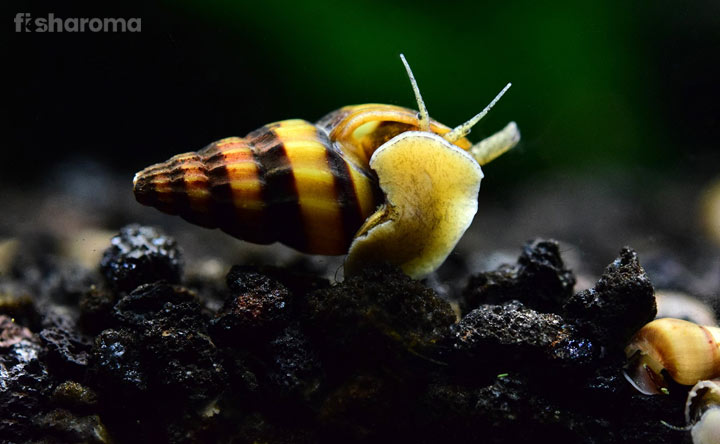The Complete Care Guide of Flower Shrimp (Bamboo Shrimp)

When it comes to having non-fish pets in your aquariums, many people get apprehensive. They think that maintaining non-fish pets can be hectic and ultimately not worth it.
Well, you can dump all those misconceptions to the trash bag because not all of them are tough to rear. And we are going to prove that today by citing the example of one such animal – the Flower Shrimp. From its lifespan to its tank requirements, from its dietary needs to its breeding process, we are going to breakdown every aspect about their lives so that you can have a wholesome experience by bringing them to your home.
Key Specifications on Flower Shrimp
As is our tradition, before we dig deep into the lives of the animal in question, we are going to take a look at some of their key specifications.
| Scientific Name | Atyopsis moluccensis |
| Family | Atyidae |
| Origin | Southeast Asia |
| Size | 4” (10 cm) |
| Colour | Brown, tan, red |
| Care Level | Easy |
| Lifespan | 1-2 years |
| Temperament | Peaceful |
| Compatibility | Low |
| Tank Size | 20 gallons (Minimum) |
| Diet | Omnivore |
Overview
Members of the Atyidae family, Flower Shrimps are one of the most popular freshwater shrimps that you can pet at home. They are also known as Bamboo Shrimps in many parts of the worlds. Some other aliases for Flower Shrimps are Marble Shrimp, Rock Shrimp, Timber Shrimp, Filter Shrimp, Asian Filter Shrimp, Maluku Shrimp, Fan Shrimp, Mountain Shrimp, Singapore Flower Shrimp, and Wood Shrimp.
Not only they are easy to maintain, but their diet, which mainly consists of algae, and waste materials make them an ideal candidate to keep your tank clean.
Origin & Habitat of Flower Shrimp
Having their origin in Southeast Asia, Flower Shrimps are seen abundantly in Malaysia. You would also see them in Thailand, Sri Lanka, and Okinawa.
In the wild, you will find them living in streams and rivers with fast currents. This is why you would be requiring a strong filter in your aquarium. More on that later!
Their habitat is also dominated with the presence of a lot of vegetation and rocks, especially lava rocks.
Appearance of Flower Shrimp
Flower Shrimps have four pairs of fans which they use to catch food and filter water. They also have two sets of antennae alongside two small eyestalks. They are also able to cover their eyes in order to shield themselves from threats.
The rear legs of Flower Shrimps are shorter and thinner than their front legs. Their thick carapace has lines down the shell that gives it the texture of the wood grain.
They have six abdominal segments and their sixth segment is connected to their tail. Their tail in itself has four flat segments and a telson.
The first set of legs is smaller in females. In addition, the males have stronger claws in their forelegs.
Size of Flower Shrimp
A healthy Flower Shrimp can grow up to 4” (10 cm) in size. Of course, the condition that it is kept in and the care it is given play a vital role in determining its size.
Colour of Flower Shrimp
Probably the most fascinating feature of Flower Shrimps entails their colour. They are able to quickly change their colours on a dime.
Flower Shrimps also have a racer stripe that runs down their backs. This stripe is more defined in the younger ones.
The most common colours in which they are seen are that of brown, tan, and red, although some rare variants of yellow and sandy green can also be seen. Their colouring is dependent on various factors including the following:
- Where they are caught from
- Their diet
- Their shedding process
- The tank plants in their surroundings
Behaviour of Flower Shrimp
Flower Shrimps are extremely peaceful by nature. However, poor water conditions can stress them out. So, make sure that the tank environment is optimal round the clock. They are known to escape their tanks, which is why you need to ensure that you have a tank lid on always. Their colour-changing camouflage ability will keep you amused.
Flower Shrimps are nocturnal beings. As such, they are most active when it is dark.
When you first introduce them to the tank, they might appear shy, but once they get acclimatised, they can be very playful. They love to hide themselves.
Another important aspect that you need to keep in mind about Flower Shrimps is that they moult every couple of months, wherein they shed their old shell for a new one. They often go hiding more than usual a couple of days before moulting.
The first few days following their moulting process, they are at their most vulnerable stage.
Lifespan of Flower Shrimp
When presented with an optimal environment, they can live up to 1-2 years.
Diet of Flower Shrimp
Being omnivorous by nature, you don’t have to worry a lot about the diet of Flower Shrimps. They will consume anything from algae to the fish wastes to the leftover foods in your tank. As such, they are great at keeping the tank clean.
You can also provide them with crushed algae wafers or flake food. Be sure to moisten them before adding them to the tank. Micro worms, spirulina powder, and pond plankton are also ideal food items for Flower Shrimps. In addition, you can also feed them frozen daphnia and cyclones, decapsulated eggs of Brine Shrimp, and live Brine Shrimp nauplii.
We recommend you introduce Flower Shrimps to an already established tank that has a plant habitat so that they get access to plant decay and algae from the very beginning.
Don’t feed them shrimp pellets since they are too big for them to eat.
Tank Requirements for Flower Shrimp
In order to make sure they are at their healthiest self, you need to replicate their natural habitat as much as possible in your aquarium. To do that, you need to keep the following things in mind.
Tank Size
Since Flower Shrimps are filter feeders and get their food from the water column, you need to ensure that they have adequate space around them. A 20-gallon long tank is ideal for keeping two of them together. For each additional Shrimp, add an extra 10-gallon space in your tank.
Substrate
You can use a mixture of aquarium sand and gravel for the tank where you put your Flower Shrimps in.
Filter
Due to the fact that they live in fast current water, you need a strong filter in your tank. Sponge and matten filters will get the job done here. Keep an eye on them because they are known to escape through the filter vents. You can also use an aqua pump to generate current in the water.
Presence of a filter would also satiate their need for high oxygen.
Ornaments
Flower Shrimps love to hide. So, please provide them with plenty of rocks, driftwood, artificial castles and caves. These are especially needed when they moult because their new shells are soft at that time and they feel extremely vulnerable.
Presence of Flora
As we stated earlier, their diet is heavily dependent on vegetation. As such, having aquatic plants in a Flower Shrimp tank is of utmost importance.
However, please keep in mind that if you have any plants, and you are using fertilizers for them, then you need to check the ingredients. Copper should be not there in the plant fertilizer that you use since copper can prove fatal for your shrimps.
Cleaning Method
Be sure to regularly clean your tank so that your pets can have a toxic-free healthy environment to thrive upon. Do not use soap or chemicals to clean the tank as their harmful residue will stick around and prove to be fatal for your shrimps.
Use a soft cloth dipped in lukewarm water to clean the tanks. Put the substrate under running water to get rid of any debris. For ornaments, use a soft brush to clean them.
While cleaning the tank, make sure your shrimps are kept in a safe bucket with a lid so that they don’t escape.
Water Type for Flower Shrimp
With the tank requirements now known, let us dig deep into the water conditions that you need to fulfil for your Flower Shrimps.
Temperature
The recommended temperature range for Flower Shrimps is 24-25° C (75-77° F).
pH Level
They prefer slightly alkaline or neutral water. Therefore, make sure the pH level for their tank water remains between 7-7.5.
Hardness
Moderate to medium-hard water should be used for their tank. As such, the general hardness of the tank water should be around 6-80 dGH.
Mineral Level
You need to make sure that the level of ammonia and nitrite is zero in the tank. As for the level of nitrate, don not let it exceed 40-50 mg/l.
Replacement Procedure
Regular water replacement is a key factor that would ensure a healthy and complete life for your Flower Shrimps. We recommend you to replace 25 per cent of the tank water on a weekly basis. If you can’t change the water every week, then replace 35% of the tank water every 15 days or 45% of the tank water every month.
You should never replace the entire tank water content altogether as that would kill the beneficial bacteria present in the tank. Also, while adding the new batch of water to the tank, make sure its parameters (temperature, pH level, mineral level, hardness) are the same as that of the existing batch of water.
Compatibility of Flower Shrimp
Flower Shrimps are peaceful beings and can do well when kept in groups of 3-4, provided they each have enough space for them. As we stated above, for each additional shrimp you add to the tank, make sure they have 10 gallons of space added too.
Suitable Tankmates for Flower Shrimp
They bode well with similar peaceful, non-aggressive creatures. With that being said, some of the ideal tankmates for Flower Shrimps are as follows:
- Otocinclus Catfish
- Cory Catfish
- Amano Shrimp
- Ghost Shrimp
- Red Cherry Shrimp
- Vampire Shrimp
- Ramshorn Snail
- Nerite Snail
- Rabbit Snail
- Malaysian Trumpet Snail
- Mystery Snail
- Ivory Snail
- Japanese Trapdoor Snail
- Assassin Snail
- Gold Inca Snail
Unsuitable Tankmates for Flower Shrimp
Keep them away from large, predatory, and aggressive species as they would become victims to them. As such, you should not keep Flower Shrimps with the following species:
Breeding of Flower Shrimp
Here comes the difficult part. While caring for Flower Shrimps is extremely easy, breeding them is not. The young Flower Shrimps find it difficult to survive without the salty, brackish water found in their natural habitat.
Females stick several hundreds of eggs to their pleopods and carry them for 22 days. Small larvae hatch from these eggs. If you don’t put them away in due time, they are either eaten away by the parents or get caught in the tank filter or perish while shedding.
The young ones first need phytoplankton and then zooplankton as part of their diet.
We recommend you buy Flower Shrimps from a reputed and verified pet store instead of trying to breed them on your own.
Summary
Flower Shrimps are one of the most peaceful and easy-to-care non-fish pets that you can pet at home. They are extremely non-demanding when it comes to their tank and dietary requirements. They keep your tank clean by cleaning off algae and waste products from it.
You only have to make sure that your tank has a strong filter which would be able to generate fast currents in the water. Breeding them can be extremely tough, which is why it is not recommended to do it at home.
Interesting Facts about Flower Shrimps
- Flower Shrimps are able to widen or narrow their tail segment.
- The female Flower Shrimps are larger than their male counterparts.
- They can remain motionless without feeding for long periods. So, just because they aren’t moving, it doesn’t mean that they are dead.
Similar Non-Fish Pet Articles
Here’s a look at some of the other non-fish pet choices.
- Ghost Shrimp Care Guide – An ethereal creature, learn how to pet them at home from here.
- Amano Shrimp Care Guide – A highly compatible and popular non-fish pet, take a sneak-peek into their lives from here.
- Assassin Snail Care Guide – Despite their fearsome name, they are quite peaceful. Learn more about their lives from here.

